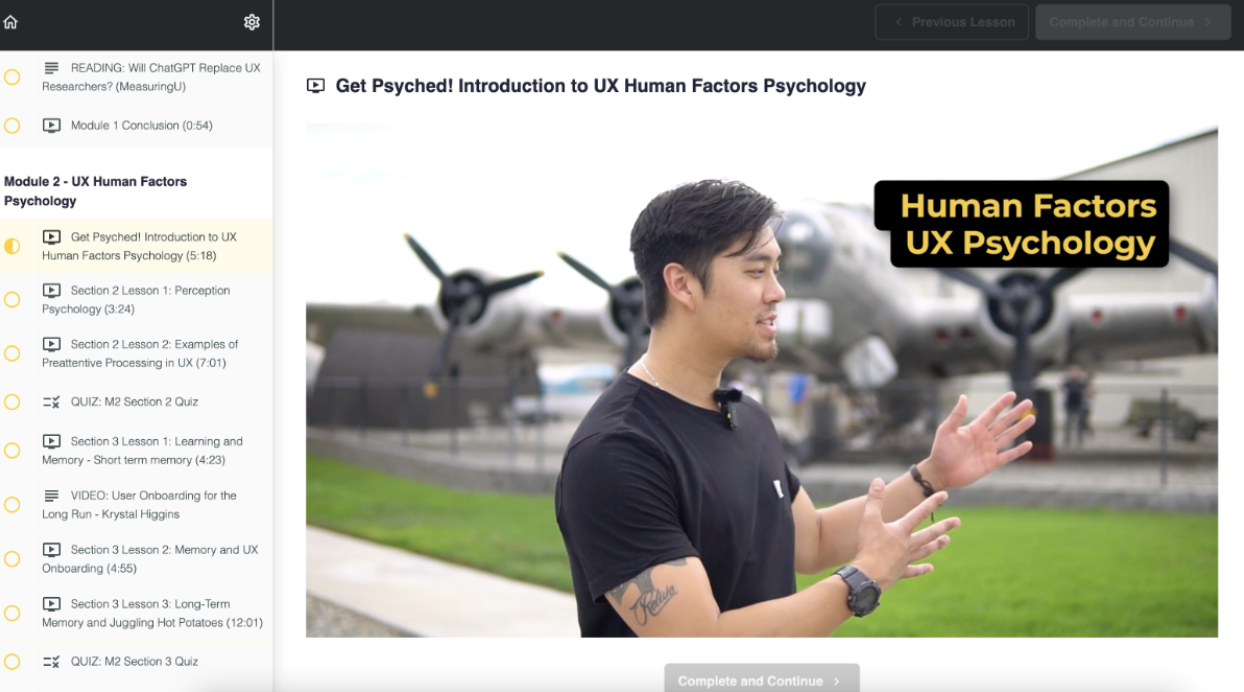In the previous chapter of our CX research guide, we’ve discussed the basics of CX research, the main concepts related to it, its benefits, and best practices. However, to understand how to conduct CX research effectively it is also vital to have a detailed understanding of the proper steps that should be taken during the research to ensure validity and relevance of collected information.
Thus, in this chapter, we’ll explain how to conduct CX research, delve into the specific steps of the process, and share some practical tips for analyzing the insights and recruiting participants.
Key Takeaways:
➡️ CX research goals must align with business objectives and customer experience gaps.
✅ Combining different CX research methods like surveys, interviews and usability tests, offers holistic insights into customer behavior.
🧠 Research questions should be unbiased, align with the method used, and focus on the type of data needed.
💡 CX studies can be either moderated for qualitative insights or unmoderated for scalable quantitative data.
🌍 Recruiting for CX research varies in engagement and diversity, using customer databases, online panels, or social media.
Planning for CX Research

Planning for customer experience research is a crucial step to ensure your study is on the right track and corresponds to the overall business goals. Let’s take a look at the specific steps you need to take to jumpstart your CX research process.
1. Define CX research goals
Defining CX research goals is all about understanding what you want to learn about your customers’ interactions with your product. Setting those will help to guide the whole process of CX research and understand what to focus on when the amount of data becomes overwhelming.
To define the goals start by taking a look at your business objectives. For instance, if increasing customer retention is a key objective, your CX research could focus on understanding factors that lead to customer loyalty.
Another place to look for CX research goals, is your product’s customer experience gaps. Look for areas where customer feedback indicates there’s room for improvement. This could be a high churn rate, customer complaints, or negative feedback on certain aspects of your product or service.
Make sure that the goals you set are clear, specific and measurable, so that you’re able to track your progress and improvements later on.
2. Select target audience
Base the target audience of your research on the goals you’ve defined earlier.
Identify if you need to focus on a specific customer group and if so, segment the audience to choose the right one based on the specific criteria (for example, their experiences or needs). If you already have your user personas defined, use them as a guide.
Alternatively, review your company’s past sales data, customer feedback, and market trends to identify who is most affected by the issue you’re researching.
You can then either recruit from a specific customer base you’ve defined or recruit CX research participants with the help of research recruiting platforms. Such platforms offer access to a large pool of participants and by specifying a particular type of users you’re looking or you can recruit people who are representative of your customer base.
3. Choose CX research methods & tools
There are various research methods that help with collecting CX insights.
Some of them include:
- CX Surveys
- Usability Testing
- Session recordings
- Customer Interviews
- Customer Journey Mapping
- Focus Groups
The CX research methods you choose depends on your research goals, target audience, and the type of data you need. By analyzing the type of data you require (qualitative or quantitative), you’ll be able to choose the right research method or a combination of those. For each method there are different CX research tools that can help to conduct those studies online and analyze customer insights.
As in-depth CX research usually involves multiple research methods that help to collect both qualitative and quantitative insights, there are also all-in-one tools like UXtweak, that provide all the capabilities you need in one place.
Use UXtweak as a holistic platform for all customer research methods you need: surveys, interviews, usability tests and so much more!
4. Prepare research questions
Once again, the nature of your CX research questions will depend on the goals you’ve defined earlier. Think about how you can collect the insights that provide additional information about your issue and the customers that face it.
Focus on creating questions that are natural and clear. Avoid leading questions that suggest a particular answer or may bias the participants in any way.
When writing your questions, focus on the research method you chose and the type of data you need. For example, when preparing for an interview, you might want to focus on open-ended questions instead of closed ones, as they will help to really delve into the conversation with the customer and collect enough qualitative insights.
Conducting the CX Study

Now that your CX research study is ready to go, let’s take a look at the process of conducting the tests and analyzing insights.
1. Run the tests
Start by deciding on the testing approach. You can either choose to conduct a moderated study or make it unmoderated.
Moderated tests involve a facilitator guiding the participant through the test. This method is great for when you want to get more qualitative insights, ask follow-up questions in the process, and follow the participant’s body language.
Unmoderated tests are completed by participants without real-time guidance. They are more scalable and better for quantitative data.
No matter if you’re running a moderated or unmoderated study, provide clear instructions to the participants. Make sure that understand what’s going to happen and what you expect from them. Mention that the study you’re conducting is not a test of their abilities but rather a way for you to collect their feedback and improve the product together with their experiences.
Before launching a full-scale study, run a pilot test to ensure everything works as intended. This will allow to test the clarity and comprehensiveness of your tasks, questions, and study overall, and give you an opportunity to eliminate issues before the study goes live.
After everything is ready, run your tests and collect the data. Record the sessions so that you can come back to them later and make sure to take notes of meaningful insights and issues that customers spot.
💡Learn more about taking notes correctly during moderated tests:
2. Analyzing the Data
Analyzing the data you’ve collected during the CX research is the crucial step in translating raw information into actionable insights. Start by collecting all data in one place. Organize it so that it’s ready for analysis.
For interview transcripts, open-ended survey responses, etc., start with coding. This involves labeling segments of data with tags or themes. Look for patterns, common issues, sentiments, or suggestions.
For quantitative data, you can leave a big part of the analysis process to your research tool of choice. For example, UXtweak analyzes all the data from your studies automatically and puts it into a comprehensive dashboard with the findings.
There, you can find a profile for each participant, in-depth analytics of their responses, and data visualizations in the form of diagrams and graphs. You can also leverage funnel analytics, heatmaps, usability scores, and other metrics for a more comprehensive analysis of each task and question, depending on the research method you used.
Focus on findings that are most relevant to your research objectives. End the analysis process with actionable recommendations based on the insights. What specific changes can you implement to improve the CX at a specific customer touchpoint?
3. Reporting and Applying Findings
Put all of your findings and recommendations together in an actionable research report or presentation. This will make it easy to share the insights with other teams as well as get stakeholder buy-in for implementing CX changes.
Tailor your report to your audience. Use clear language, support your statements with facts, and provide visual evidence of the issues participants faced. Add quotes and recordings to your report, explain how you conducted the research and what made you come to these specific solutions.
Translate insights into actionable next steps for product development, marketing, or customer service improvements. Use them to inform changes in your CX strategy and make sure to measure the impact of your improvements over time.
Remember, that CX research is an iterative process, that requires constant data collection and refinement. You may need to test your changes multiple times and fine-tune them based on customer feedback until they actually make the intended impact.
Recruiting for CX research

Recruiting for CX research is a crucial part of the process. If you get it right you can be sure that the insights you collect will be relevant and helpful, whereas if you fail to recruit the right participants you’re risking wasting your time and money on a useless research.
There are a couple of main channels you can use for CX research recruiting:
Channel 1: Your Own Customer Database
Those are the people who are already your customers and therefore are using your product or have been in contact with it before. They can be reached via an email newsletter or your company’s social media pages, for example.
Advantages:
- Engagement: These customers might be more invested in providing feedback as they have a prior relationship with your brand.
- Relevance: The people you recruit will be actual representatives of your customer base.
Disadvantages:
- Bias: You might only get feedback from customers who have had either very positive or very negative experiences.
- Limited Perspective: It excludes potential customers who are not in your database but are part of your target market.
Channel 2: Online Recruiting Panels
Online recruiting panels are usually provided by research software, giving you access to a large pool of people to recruit from based on specific criteria. An example of such a panel is UXtweak’s 155M+ User Panel.
It helps to recruit people who are representative of your research’s target audience which is great in cases when recruiting from your own customer base is not an option.
Advantages:
- Diversity: Access to a wide, diverse group of participants from various demographics and geographic locations.
- Efficiency: It’s typically quicker to recruit participants through these channels, especially for large-scale studies.
Disadvantages:
- Cost: These services can be more expensive than other recruitment methods.
- Engagement: Participants from panels might be less engaged as they are often motivated by incentives.
Channel 3: Recruiting from Social Media and Online Communities
This method is only relevant for CX research when your study doesn’t require insights from a very niche audience. In that case you can recruit from online communities like forums, LinkedIn or Reddit groups that correspond to your targeting criteria.
Advantages:
- Reach: The potential to reach a vast and varied audience, including people who might not be your current customers.
- Cost: This method is quite cheap compared to other recruiting strategies.
Disadvantages:
- Quality Control: It can be challenging to verify the authenticity and engagement level of participants recruited through these channels.
Wrapping up
Conducting CX research is not an easy task but with the right strategy and good research tools at hand, you’re definitely able to make the most out of it and improve your product. Follow the steps we’ve described above, keep attention to details, and get ready to collect customer insights!
Looking for a good online research tool to help you? UXtweak is your all-in-one solution! Use our comprehensive research tool to conduct CX research and run surveys, interviews, usability tests and so much more.
Unleash the power of UXtweak with your free account and give a try to our research tools👇




